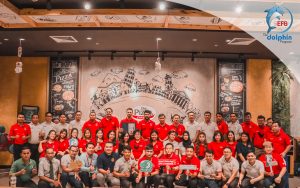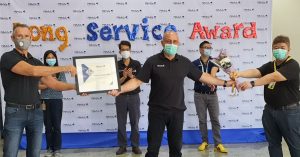Chatchawarn Jirupathum, IT Manager, RMA Group.
It is difficult for traditional business models to survive today. To stay competitive, companies need to be adaptable to change, and one of the biggest changes of our time is the shift to digital.
Digital transformation is at the top of every CIO’s mind. If you are good at guiding your company through a digital transformation, everyone in the IT department will be thinking about it. Now, if you’re great at it, all employees across departments will be aware of the shift to digital and use it to maximize their workflow – that’s the golden zone companies should be aiming for.
As the Group IT Operations Manager of RMA Group, I have immersed myself in multiple roles and projects, from app development to supporting our global IT operations. I have had the opportunity to guide the group through a digital transformation journey over the years. Here are the biggest lessons I have learned.
1. Know Yourselves as a Company First
This is the most crucial step in the shift to digital. Understand your company and its goals. Know what your current products and services are, plus who your current and potential customers are. Be aware of upcoming trends in your market and across the globe. Understand your company’s strengths, weaknesses, and its footprint. Once you have nailed these down, keep revisiting each item as you continue on your digital transformation journey.
2. What Are You Looking to Gain?
As you start to know yourselves better as a company, you can discover what switching to digital should look like. Outcomes should start coming to mind. This may seem obvious but I have seen too many examples of companies that grew quickly thanks to digitization and fizzled out fast, like Pokemon Go. This happens when you have not well prepared and thought through the outcomes you are looking to gain from the transition to digital.
We stayed on top of this at RMA Group by knowing our company inside out. The IT team often sits down with executives and the business side to really get to know where our priorities lie, which brings us to the next point.
3. Work with the Business Side
In the past, business people did not know much about the IT side and vice-versa. Nowadays, you need to see each other as partners. The IT side, more than ever, needs to be malleable and able to coordinate with the other arms of the company.
At RMA Group, I help the business side understand the tech side. We then decide if we should jump onto new technology and find ways to remain competitive. Consulting the business side is now a required part of my job.
4. Prep and Implement
Digital transformation is not just about introducing an app or a platform. It is a whole way of doing business, and this can go all the way back to the way we live our lives. Before guiding others on this digital journey, you need to start with the self. Know yourself, your goals and challenges you face. Keep adaptable to change and keep revisiting and reassessing your goals, because they will change again.
From here, you can lead by example, and that is how I guide our IT team through the digital transformation journey. While no journey is smooth, we prep by going back to step one, which is knowing the company like the back of our hands. Besides guiding the team, I am always looking out for passionate people. When we spot those who want to be leaders, we help develop their mindset into that of a leader. They build their own opportunities, which RMA facilities.
Once the IT team is in sync, you can start to prep the workforce for that switch to digital. Being at the RMA headquarters, my job is to make sure the IT team throws out policies using the same template. This is crucial for every company. On top of applying the right technology and answering to business requirements, make sure you do not confuse your colleagues.
5. Resource Management
You cannot forget the importance of time and resource management. For any workload, make sure you are using the right talent. Develop their talents, keep communication intact, and support them whenever needed. Many companies will face a digital skills shortage, but one great way to combat this is to foster continual learning with your talent.
Last year, RMA Group held their first regional IT workshop, which I hope we continue doing. The outcomes were phenomenal; more people understand RMA IT standard processes, get in-sync with peers, keep up-to-date on the technology, and we found ways to maximize the IT budget. This was a good example of resource and time management done right.
What the Future Holds for Digital Transformation Looks Like
I had the chance to speak with senior IT leaders around the world and in Southeast Asia. While they all have different approaches to digital transformation, one takeaway remains the same: the world is changing, and we need to be able to do things creatively. For example, banks are transitioning to e-banks, you can order food from a mobile app, etc. These ideas do not come from playing it safe. You need to be playing around in your playground and realize that successes cannot come without past failures (but risks need to be managed).
Another big takeaway is that in the future, IT will be blended through all functions and all businesses. Earlier in this piece, I mentioned a golden zone that CIO’s aim to reach, where employees are aware of the shift to digital and use it to maximize workflow. We are getting there. I can see that in a decade or so, employees across all departments will be better at using technology to its full potential. I envision companies with smaller IT teams or few IT consultants on hand, and an entire workforce of tech-savvy talent.

















